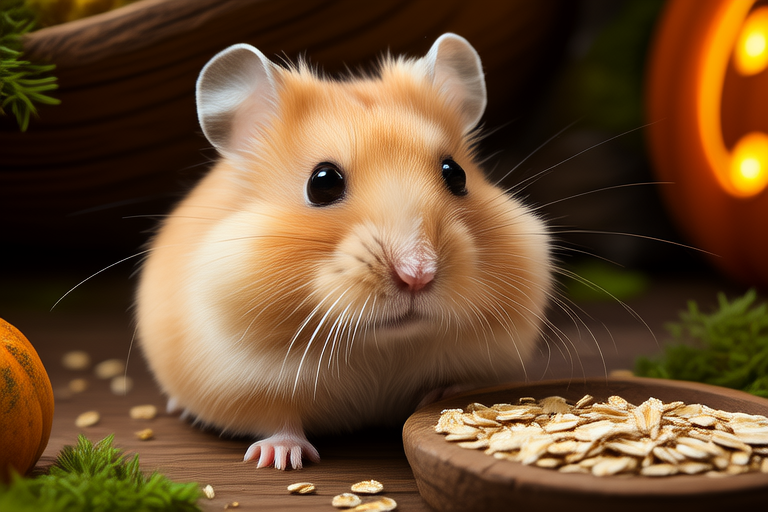Adorable! Uncover the Hidden Personality of Your Golden Hamster
Golden hamsters have long been cherished as one of the most popular pets among animal enthusiasts. Their charming appearance and gentle demeanor make them irresistible companions for families and individuals alike. These small creatures, native to Syria, have captivated hearts worldwide with their soft, plush fur and expressive eyes. As more people choose to welcome these delightful rodents into their homes, understanding their unique personalities becomes essential for fostering a harmonious relationship.
Common Behaviors and Debunked Myths
One of the first things many new hamster owners notice is their pet’s nocturnal nature. Golden hamsters are primarily active during the night, which can sometimes lead to misunderstandings about their behavior. Contrary to popular belief, being nocturnal does not mean they are lazy; it simply means their bodies are designed to be most alert and energetic at night. During the day, you might find your hamster curled up in its nest, seemingly asleep, but don’t be fooled – this is just part of their natural routine.
Another common misconception is that hamsters are solitary animals who prefer to live alone. While it is true that they do not require companionship from other hamsters, they do thrive on interaction with their human caregivers. Providing attention and care can strengthen the bond between you and your pet, making them feel safe and secure in their environment.
Golden hamsters are also known for their burrowing instincts. In the wild, they create extensive tunnel systems underground, which serves both as protection and storage space. When kept as pets, this behavior manifests itself through digging in their bedding material. This activity is not only fun for the hamster but also helps maintain muscle strength and mental stimulation.
Bonding Tips and Understanding Unique Traits
To build a strong connection with your golden hamster, start by establishing a routine. Regular handling sessions can help your pet become accustomed to your presence and reduce any initial shyness. It’s important to approach your hamster slowly and gently, allowing it time to adjust before attempting physical contact. Once comfortable, you can begin offering treats such as small pieces of fruit or vegetables, which will further encourage positive interactions.
Understanding your hamster’s body language is crucial in forming a deeper bond. For instance, if your pet flattens its ears against its head or tucks them back, it may indicate fear or discomfort. On the other hand, perked-up ears usually signal curiosity or interest. Additionally, watching how your hamster interacts with its toys or surroundings can give valuable insights into its preferences and personality traits.
Sleeping Patterns, Eating Habits, and Emotional Expression
Golden hamsters typically sleep for around 8-12 hours each day, though individual variations exist. They tend to nap throughout the day and engage in more prolonged periods of rest during the evening and early morning hours. Ensuring a quiet, darkened area within their cage can promote better sleep quality, contributing positively to overall health.
In terms of diet, these little creatures enjoy a variety of foods including commercial pellets, fresh vegetables (such as carrots and broccoli), and occasional fruits like apples or bananas. However, avoid feeding them foods high in sugar or fat, as these can lead to obesity and related health issues. Always provide fresh water daily, either through a bottle or shallow dish, depending on what your hamster prefers.
Expressing happiness or stress through non-verbal cues, golden hamsters have several ways to communicate their feelings. A happy hamster might exhibit behaviors such as running on its wheel or exploring new areas within its habitat. Conversely, signs of stress could include excessive chewing on cage bars, hiding more frequently than usual, or even displaying aggressive postures towards humans or objects.
Creating a Stimulating Environment
Providing an enriching living space plays a vital role in bringing out the best in your golden hamster’s personality. Start by ensuring the cage is large enough to allow plenty of room for movement and exploration. A minimum size of approximately 24 inches long x 12 inches wide x 12 inches tall is recommended for single hamsters. Adding various levels and tunnels within the enclosure mimics their natural habitats, encouraging physical activity and mental engagement.
Incorporating different types of bedding materials can also enhance your hamster’s experience. Options like shredded paper, wood shavings, or specially designed fleece liners offer comfort while promoting healthy nesting behaviors. Toys specifically designed for small animals, such as chew sticks, exercise wheels, and tunnels, stimulate both physical and cognitive abilities.
Lastly, maintaining cleanliness within the cage is paramount for your hamster’s well-being. Regularly clean out waste areas and replace soiled bedding to prevent odors and potential health risks. By providing a clean, spacious, and engaging environment, you set the stage for a joyful and fulfilling life for your beloved golden hamster.
In conclusion, uncovering the hidden personality of your golden hamster requires patience, observation, and dedication. By learning about their typical behaviors, dispelling common myths, bonding over shared activities, and creating a stimulating habitat, you can foster a loving relationship with your pet. Remember, every hamster is unique, so take the time to get to know yours individually. With proper care and attention, your golden hamster will bring endless joy and companionship into your home.
